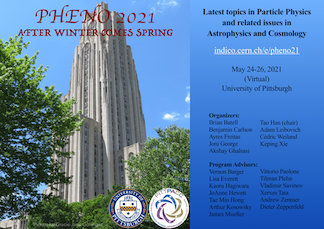Speaker
Description
The recent results from the LHC suggest that the next search for New Physics should be performed in the low-energy mass range using high-intensity beams. That has revived the interest in the phenomenology of new light particles with feeble interactions with the Standard Model[1]. The DOE in the US is perfectly positioned for that quest with four laboratories (FNAL, ORNL, BNL, and LANL) capable of providing intense proton beams in the 1 - 10 GeV energy range. Light dark matter must be neutral under SM charges, otherwise it would have been discovered at previous colliders[2]. The only known particles with all-zero quantum numbers are the $\eta$/$\eta$' mesons and the Higgs boson. They provide an excellent laboratory to search for New Physics. An $\eta$ factory is within the reach of each of the four aforementioned laboratories.
The REDTOP experiment is being designed to produce $10^{13}$ $\eta$ mesons and $10^{11}$ $\eta$' mesons. Two different production mechanisms are available, depending on the energy and intensity of the beam. The physics sectors which can be probed at REDTOP range from the violation of discrete symmetries to the search for new particles. Non-eta meson sectors can also be explored, such as ALPS and QCD-axions. Finally, the Standard Model can be probed at low energy at an unprecedented level. Novel detector techniques needs to be developed to cope with the high interaction rate. Future High Energy and High Intensity experiments will benefit from that R&D. A collaboration has been forming since several years with the intent of submitting a proposal to the US HEP Community.
[1] J. Alexander et al., Dark Sectors 2016 Workshop: Community Report, 2016, http://inspirehep.net/record/1484628/files/arXiv:1608.08632.pdf
[2] https://indico.fnal.gov/event/44819/contributions/193751/attachments/132857/163535/RF6-Kickoff-DM-Production.pdf
